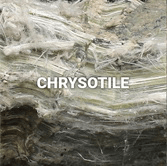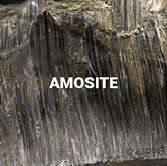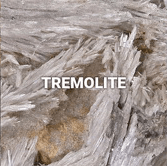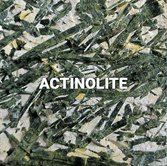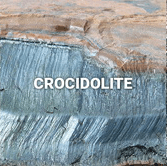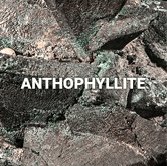What Are Asbestos Minerals?
Asbestos is a group of six naturally occurring fibrous minerals which form on serpentine rock in bundles of long, thin fibers. The properties of asbestos have been exploited for various applications – mainly for textile manufacturing – ever since ancient times, with the earliest known use dating back to 4000 B.C. Fibers are very flexible, non-flammable, and unable to conduct electricity. It is also noteworthy that the tensile strength of asbestos is greater than that of steel.
Deposits of asbestos can be found all across the world, some of the largest being located in Russia, Canada, Brazil, China, and India. These countries have also been the primary providers of raw asbestos since the 1930s, when the mineral started gaining more and more popularity in industries such as construction and shipbuilding. Asbestos occurs in 20 U.S. states as well, including California, Pennsylvania, South Carolina, Virginia, and Washington. As the serpentine rock it develops on resides in the earth, asbestos has to be mined. The mining of asbestos in the U.S. began in 1858, when the mineral was demanded by Johns Company, the forerunner of Johns Manville, for the manufacturing of insulation, whereas the last asbestos mine closed in 2002.
List of U.S. Asbestos Mines
County: Coconino
- Bass deposits (chrysotile)
- Hance deposits (clinochrysotile)
County: Gila
- American Asbestos Cement Corp. No. 2 mine (Triangle Asbestos Co. group) (chrysotile)
- American Asbestos Cement Corp. No. 1 mine (Triangle Asbestos Co. group) (chrysotile)
- Home mine (chrysotile)
- Tony mine (chrysotile)
- Sloan Creek group (Aileen group) (chrysotile)
- Man O'War mine (chrysotile)
- Buckhorn mine (chrysotile)
- Hardluck claim of the Melrose mines (chrysotile)
- Maxwell claims of the Melrose mines (chrysotile)
- White Beauty claims of the Melrose mines (chrysotile)
- P-38 claims of the Melrose mines (chrysotile)
- J.W. workings of the Melrose mines (chrysotile)
- American Fiber Co. properties (Rock House Group)--North deposits (chrysotile)
- American Fiber Co. properties (Rock House Group)--South deposit (May mine) (chrysotile)
- Rosa claims (chrysotile)
- Lucky Strike group (Sloane group) (chrysotile)
- Pueblo group (chrysotile)
- Loey and Lena property (chrysotile)
- Apache mine (Crown Asbestos Mines, Inc. property; Seven Star group) (chrysotile)
- Reynolds Falls group (chrysotile)
- Fiber King mine (Riverside group) (chrysotile)
- Salt River group (chrysotile)
- Regal group (chrysotile)
- White Tail group (Enders mine) (chrysotile)
- Canadian mine (Asbestos King claims) (chrysotile)
- Stansbury deposit (K & M mine; Arizona Asbestos Mining Co. property) (chrysotile)
- Fourth of July prospect (chrysotile)
- Dream Girl prospect (chrysotile)
- Snake Hill deposit (Bluff claims) (chrysotile)
- Sorsen-Williams Asbestos Corp. properties (chrysotile)
- Great View claims (Cobb & Dunaway group) (chrysotile)
- Pine Top group (chrysotile)
- Seventy-two and Monte Christo groups (Grandview No. 4 mine) (chrysotile)
- Emsco mine (Accident group) (chrysotile)
- American Ores mine (chrysotile)
- Ruiz prospects (chrysotile)
- Globe group (Friday claim) (chrysotile)
- Arizona Asbestos Assocation Group (Victory mine) (chrysotile)
- Globe Asbestos group (Locke mine) (chrysotile)
- El Dorado mine (chrysotile)
- Miami group (chrysotile)
- Triple Star Mining Co. property (chrysotile)
- Bear Canyon Mining Co. properties (chrysotile)
- Metate Asbestos Corp. claims (Apache mine) (chrysotile)
County: Alameda
- John D. Hoff mine (short-fiber asbestos)
County: Butte
- John Quirk mine (tremolite asbestos)
County: Calaveras
- Jefferson Lake mine (American, Calaveras, California, Copperopolis, Pacific, Voorhees) (chrysotile)
County: El Dorado
- El Dorado Copper Co. property (Contraband copper mine)
County: Fresno
- Coalinga (Johns-Manville) mine (chrysotile)
- Atlas Asbestos Co. (Hidden Splendor, Todd) mine (chrysotile)
County: Inyo
- McIlroy property (tremolite asbestos)
- Huntley Industrial Minerals, Inc. mine and Whitetop Mountain deposits (tremolite and chrysotile)
County: Los Angeles
- Fiber Queen asbestos mine (chrysotile and tremolite)
County: Napa
- Tabor Mining Co. (Phoenix mine, Monticello mine, Kohler and Chase asbestos quarry, Napa asbestos quarry) (chrysotile)
County: Nevada
- Stark (Sierra) asbestos deposit (chrysotile)
County: Placer
- Iowa Hill deposits (Dewey claim, Gary mine?) (slip-fiber tremolite asbestos)
- Morgan deposits (and Driscoll & Michelson claims, Wolf & Levy claims) (chrysotile and slip-fiber tremolite asbestos)
County: Riverside
- Percival (Charleboix) asbestos deposit (Katherine C. mining claims) (slip-fiber amphibole asbestos)
- Perris asbestos deposit (amphibole asbestos)
County: San Benito
- Simas Asbestos property (chrysotile)
- Santa Rita quarry (Union Carbide Corporation, KCAC mine) (chrysotile)
- San Benito Asbestos Company claims (chrysotile)
County: San Bernardino
- Golconda (Conda, Fleetfoot, Hicks) asbestos deposit (Fire-Proof?, Scorpion?) (asbestiform tremolitic amphibole)
County: Shasta
- Blas Corporation property (Asbestos Empress) (chrysotile)
- Stock property (Stock & Stevens) (chrysotile and amphibole asbestos)
- Sylvester asbestos deposit (anthophyllite asbestos)
County: Siskiyou
- Shasta View prospect (Sylvester asbestos deposit) (chrysotile)
County: Trinity
- Jones Brothers mine soda-rich (anthophyllite and chrysotile)
- Eldenlou group (tremolite asbestos)
County: Meriwether
- Joseph L. Chambless property (anthophyllite asbestos)
- Thrash prospect (anthophyllite asbestos)
County: Barrow
- L.M. Arnold and E.R. Arnold properties (anthophyllite and chrysotile)
County: White
- Sall Mountain Company property
County: Habersham
- Asbestos Mining and Manufacturing Co. (Hollywood) mine (anthophyllite asbestos)
- Sall Mountain mine (anthophyllite asbestos)
- A.E. Berrong property (anthophyllite asbestos)
County: Rabun
- H.V.M. Miller mine (anthophyllite asbestos)
- Andrew Gennett property (anthophyllite asbestos)
- Chattooga River prospect (anthophyllite asbestos)
- Nicholson estate mine (anthophyllite asbestos)
- Laurel Creek mine (anthophyllite asbestos)
- Reid mine (anthophyllite asbestos)
- L.D. Garland property (mass-fiber asbestos)
- Hicks Asbestos mine (anthophyllite asbestos)
- McCoy mine (anthophyllite asbestos)
- Dillard prospect (anthophyllite asbestos)
County: Idaho
- Kamiah asbestos deposits (brittle mass-fiber anthophyllite)
Maryland
County: Howard
- Daniels quarry (Alberton deposit) (anthophyllite asbestos)
County: Baltimore
- Bok asbestos mine (anthophyllite asbestos)
County: Harford
- Neikirk mine (tremolite and anthophyllite asbestos)
- Jenkins (Todd) mine (tremolite and anthophyllite asbestos)
County: Hampshire
- Pelham asbestos quarry (anthophyllite and chrysotile)
County: Berkshire
- Hinsdale mine (anthophyllite asbestos)
County: Gallatin
- Karst asbestos mine (anthophyllite asbestos)
County: Macon
- Peterman mine (anthophyllite asbestos)
- Commissioner Creek prospect (anthophyllite asbestos)
- Higdon mine (anthophyllite asbestos)
County: Jackson
- Round Mountain mine (anthophyllite asbestos)
- Coldsides Mountain mine (anthophyllite asbestos)
- Jennings No. 2 mine (anthophyllite asbestos)
- Jennings No. 1 mine (anthophyllite asbestos)
- Sapphire mine (anthophyllite asbestos)
- Asbestos mine (anthophyllite asbestos)
- Brockton mine (anthophyllite asbestos)
- Manus mine (anthophyllite asbestos)
- Bryson mine (anthophyllite asbestos)
- Henderson mine (anthophyllite asbestos)
- Holden mine (anthophyllite asbestos)
- Alders mine (anthophyllite asbestos)
County: Transylvania
- Miller mine (anthophyllite asbestos)
- Oakland mine (anthophyllite asbestos)
- Walnut Cove mine (anthophyllite asbestos)
- Kilpatrick mine (anthophyllite asbestos)
County: Caldwell
- Johns River mine (anthophyllite asbestos)
County: Yancey
- Blue Rock mine (anthophyllite asbestos)
- C.W. Allen prospect (Cane River mine) (anthophyllite asbestos)
- Newdale mine (anthophyllite asbestos)
- Sam Grindstaff mine (anthophyllite asbestos)
- J.C. Woody mine (anthophyllite asbestos)
County: Avery
- Burleson mine (anthophyllite asbestos)
- Frank mine (anthophyllite asbestos)
County: Grant
- Mount Vernon deposit (chrysotile)
County: Jackson
- Raspberry Creek tremolite (tremolite)
County: Josephine
- L.E.J. Asbestos (tremolite)
County: Delaware
- Village Green (Hannum) asbestos pits (amphibole asbestos)
- Rockdale (Jacob Side's) pits (amphibole asbestos)
- Smedley's asbestos mine (amphibole asbestos)
County: Montgomery
- Gladwyne quarries (amphibole asbestos)
County: Millard
- Tremolite no. 1 mine (mass-fiber tremolite asbestos)
County: Lamoille
- C-area quarry (chrysotile)
- Eden quarry (chrysotile)
County: Orleans
- Lowell quarry (chrysotile and tremolite-actinolite asbestos)
County: Bedford
- American Asbestos Company mine (anthophyllite asbestos)
Washington
County: Okanogan
- Alta Lake short-fiber (amphibole asbestos)
County: Skagit
- Lyman-Hamilton area (long-fibered asbestos)
County: Fremont
- Fire King deposit (chrysotile)
County: Natrona
- Smith Creek deposit (cross-fiber chrysotile)
- Casper Mountain asbestos deposits (cross-fiber chrysotile)
Shortly after the Industrial Revolution, asbestos became incredibly prevalent among numerous different industries, from automotive to chemical, by virtue of its convenient properties and accessibility, as well as because companies could purchase it at a low price. Asbestos production had increased to over 30,000 tons per year worldwide by the early 1900s, whereas in 1910, global production exceeded 109,000 metric tons. The peak of asbestos consumption in the U.S. was reached in 1973, at 804,000 tons.
However, despite the remarkable attributes of this mineral, asbestos is a known human carcinogen which is annually responsible for the death of up to 15,000 people in the U.S. only. It is estimated that between 1940 and 1978, over 11 million workers were exposed to asbestos on the job. The inhalation or ingestion of airborne asbestos fibers, most of which are microscopic and therefore cannot be seen with the naked eye, can cause serious diseases such as lung cancer or mesothelioma. Because individuals who were affected by asbestos exposure rarely experience clear early symptoms, these conditions are typically diagnosed at advanced stages, when treatment is quite ineffective. As a consequence, asbestos-related diseases usually have a poor prognosis.
Although the health hazard entailed by asbestos exposure had been suggested by multiple medical studies since the beginning of the 20th century, it was not until 1973 that the mineral was formally deemed carcinogenic by the U.S. Environmental Protection Agency. The main reason why the dangers of exposure failed to be recognized sooner pertains to the astounding lengths most U.S. asbestos companies went to in order to conceal the effects of exposure from both their employees and the general public for financial benefits.
Nevertheless, along with the classification of asbestos as a known human carcinogen came better regulations concerning asbestos exposure in the workplace. Asbestos is currently banned in 55 countries and while the U.S. is not among them, the use of this toxic mineral has decreased considerably within the past three decades. Few companies employ asbestos at the moment and workers who handle or come in contact with it on the job are required to wear protective equipment to prevent or at least minimize exposure.
Types of Asbestos
The two groups in which asbestos can be divided are serpentine and amphibole. While the former occurs in a layered pattern, the latter displays a chain-like structure. Serpentine asbestos refers only to the chrysotile type, whereas amphibole asbestos includes the other five. Although the consensus is that all asbestos represents a health hazard, some argue that certain mineral types are more harmful than others.
Serpentine Asbestos
Chrysotile asbestos, the only type of mineral in this group, is by far the most popular, accounting for over 90% of the entire amount of asbestos consumed worldwide. It is also considered to be the most dangerous out of the six asbestos types. The fibers of chrysotile asbestos are long, curly, and white.
Amphibole Asbestos
The following five types of asbestos fall under this category:
- Amosite asbestos. Mostly used in the manufacturing of construction products, amosite asbestos has brown fibers which are shorter and straighter than those of chrysotile asbestos. It is primarily found in South Africa.
- Tremolite asbestos. While this type of asbestos was not exploited or used commercially by itself, it would often contaminate other minerals such as talc, vermiculite or chrysotile asbestos due to the close proximity of these deposits in the earth. The color of tremolite asbestos ranges from white to brown or green.
- Actinolite asbestos. As a rare type, actinolite asbestos was not mined or employed on its own either. It occurs in the form of dark green fibrous aggregates on metamorphic rock. Actinolite asbestos can also be found contaminating vermiculite and it was sometimes mixed with this mineral for the manufacturing of insulation during the 1950s.
- Crocidolite asbestos. Because crocidolite asbestos does not have a very high heat resistance, it was sparingly employed by industries. Approximately 4% of the total amount of asbestos used in the U.S. throughout the past century was crocidolite. This blue mineral is thought to be the most dangerous type of asbestos, as its fibers are long, sharp, and needle-like.
- Anthophyllite asbestos. Similarly to tremolite and actinolite asbestos, this type of mineral is quite rare and was thereby not usually involved in the manufacturing of consumer products. It varies in color from white to brown. Deposits of anthophyllite asbestos can be found in Finland, as well as in some U.S. states.
The Presence of Asbestos in Old Buildings
The extent of asbestos use was so tremendous between 1930 and 1980 that over 5,000 different consumer products were manufactured during this timespan, the majority of which were building materials. As asbestos has fireproofing and soundproofing properties, as well as electrical resistance, it soon became the norm for building materials manufacturers to add asbestos fibers in products like insulation, siding, roof shingles, putty, floor tiles or paint.
Soon, construction companies throughout the U.S. began employing asbestos-containing building materials for nearly each project they had to carry out. Consequently, most houses and public buildings which are still standing across the country contain at least one asbestos product in their structure, which could pose a serious threat to the health of inhabitants. If you live in a house built before the mid 1980s, we advise you to be very cautious in regard to the presence of asbestos in your home. While asbestos products which are in relatively good condition do not imply a high risk of exposure, damaged, brittle or friable building materials can easily release toxic fibers in the air.
In addition to building products, which you can find out more about by visiting our homepage, asbestos may also be present in certain old household appliances, including:
- hairdryers
- toasters
- popcorn poppers
- irons
- crock pots
- electric blankets
- portable heaters
- fireproof gloves
- ironing board covers
- portable dishwashers
If you believe you have asbestos in your home, we highly encourage you to collect a sample of the suspect product using our free guide and send it to us for a free-of-charge analysis. Our experts will promptly let you know whether this toxic mineral lurks in your home. Depending on the condition of the product in question, it might not be necessary to dispose of it.
However, if it entails a considerable risk of exposure, it is strongly recommended to have it professionally removed. You can find a list of the best asbestos abatement companies for each state at the end of the guide. We also suggest you read our Asbestos Exposure section for more information on how exposure occurs and when it might result in a serious disease.

